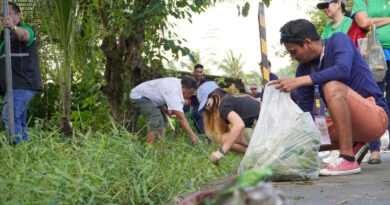65 provinces to experience ‘severe’ drought’ in Q1 2024–Solidum
(UPDATE) AT least 65 provinces will experience severe drought from February to May next year due to a “strong” El Niño, the Department of Science and Technology (DoST) said on Tuesday.
Science and Technology Secretary Renato Solidum said around six provinces or 7 percent of the total provinces nationwide may experience a dry spell.
“Based on recent conditions, moderate to severe drought conditions are likely from February to May 2024. And by end of May, 77 percent of the provinces will have potential for drought — that would be around 65 provinces, and 7 percent potential for dry spell or around six provinces,” Solidum told reporters.
He warned that “the maximum temperature in Northern Luzon around April or May can go up to 41 degrees centigrade.”
However, the heat index, the measure of how hot it actually feels when humidity is factored in, could bring up the temperature by 5 to 15 more degrees.
In Metro Manila, the temperature could reach 38.3 degrees, while in lowland Luzon, it can be as high as 39.9 degrees. Mindanao could sizzle in April at 39.5 degrees.
Solidum said the country must prepare for a “strong” El Niño.
“We need to further intensify our efforts to make sure that we are ready for this, especially in the various fields that were already mentioned, like health, water, agriculture, sanitation, and peace and order, and we also need to involve everyone in this effort,” he added.
The Philippine Atmospheric, Geophysical and Astronomical Services Administration (Pagasa) earlier warned that the provinces of Batangas, Cavite and Oriental Mindoro will likely start experiencing drought in December this year.
Pagasa Officer in Charge Nathaniel Servando said severe dry conditions will affect Abra, Ilocos Norte, Bataan, Zambales, Occidental Mindoro and Metro Manila.
A dry spell is defined as three consecutive months of below-normal rainfall conditions, while a dry condition is defined as two consecutive months of below-normal rainfall conditions.
Areas hit by drought have three consecutive months of way below-normal rainfall conditions, or a 60 percent reduction from average rainfall.
Solidum warned that the El Niño episode could be comparable to the episodes in 1997 and 1998, which were regarded as the worst.
He said the government had prepared a national action plan (NAP) to ensure water security, food security, energy security and public safety.
The NAP will be implemented by various government agencies in collaboration with local communities.
“The details of the plan will be further elaborated by the concerned departments, ensuring a comprehensive and coordinated response to the challenges posed by El Niño,” he said.
The official stressed the need for a massive information campaign on what citizens and the government can do to mitigate the effects of El Niño.
“We need to plan ahead, and we should make it fast,” he said.
During the sectoral meeting in Malacañang on Tuesday, Solidum said President Ferdinand Marcos Jr. ordered the coordination of all the plans to mitigate the effects of El Niño on water, agriculture, energy, health, security and education.
“The directive of the President would be to categorize actions into short and medium. The short must be implemented promptly, the easy ones. We have to be realistic,” Solidum said.




